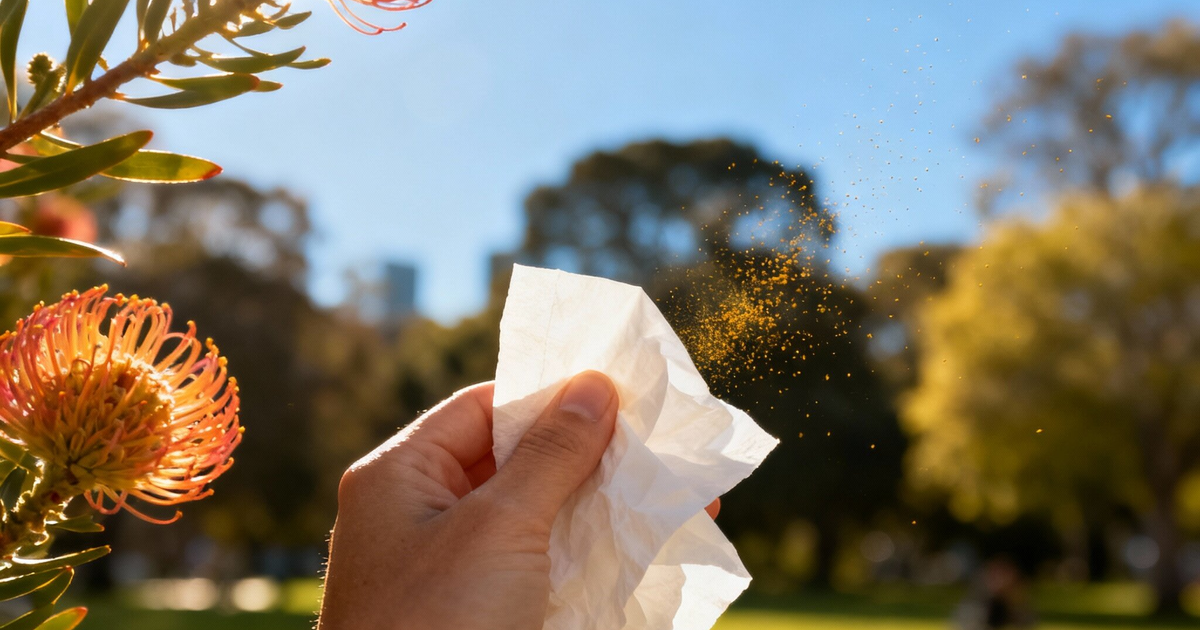Australia experiences one of the highest rates of hay fever (allergic rhinitis) in the world. Each spring and early summer, wind-pollinated grasses release pollen that can trigger itchy eyes, sneezing, and congestion. This guide helps you recognise symptoms, plan ahead, and access support.
What Causes Hay Fever in Australia?
- Grass pollens – Ryegrass and other temperate grasses dominate in Victoria, New South Wales, and South Australia during October–December.
- Weeds and trees – Wattle, plane trees, and cypress can cause issues earlier in the year.
- Weather patterns – Hot, windy days and thunderstorms spread pollen widely. Melbourne’s “thunderstorm asthma” events highlight the risk for people with asthma or allergies.
Common Symptoms
- Sneezing, blocked or runny nose
- Itchy, watery, or red eyes
- Itchy throat, ears, or palate
- Fatigue or poor sleep due to congestion
If symptoms are accompanied by wheezing or shortness of breath, seek medical advice immediately as this may indicate asthma.
Managing Hay Fever
- Monitor pollen forecasts – Check daily counts via the AusPollen app or local meteorology services. Stay indoors on high pollen and high wind days when possible.
- Use preventive medication – Antihistamine tablets, nasal steroid sprays, and eye drops can reduce inflammation. Start them before peak season for best results.
- Create a low-pollen home – Keep windows closed on windy days, use air purifiers with HEPA filters, and shower after spending time outside to remove pollen from skin and hair.
- Consider immunotherapy – Allergy specialists can prescribe desensitisation treatments for people with severe or long-term hay fever.
When to See a Doctor
Consult your GP if:
- Over-the-counter medicines are not controlling symptoms
- You have asthma or breathing difficulties
- Hay fever interferes with sleep, work, or study
- You experience recurrent sinus infections
Medicare-card holders can access subsidised GP visits and referrals to allergy specialists. Visitors without Medicare should check private health cover or travel insurance policies.
Tips for New Migrants and Visitors
- Keep a supply of familiar antihistamines when arriving in Australia.
- Register with Medicare (if eligible) soon after arrival to reduce medical costs.
- Inform your school or workplace if hay fever affects concentration or attendance, especially during October–December in southern states.
Staying informed and prepared means you can still enjoy Australia’s outdoor lifestyle, even during peak pollen season.

